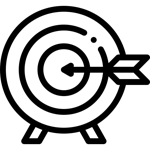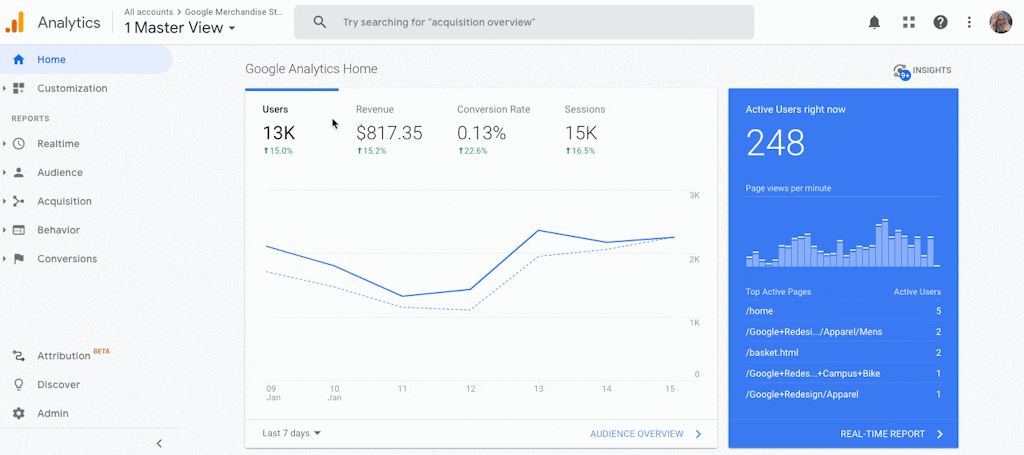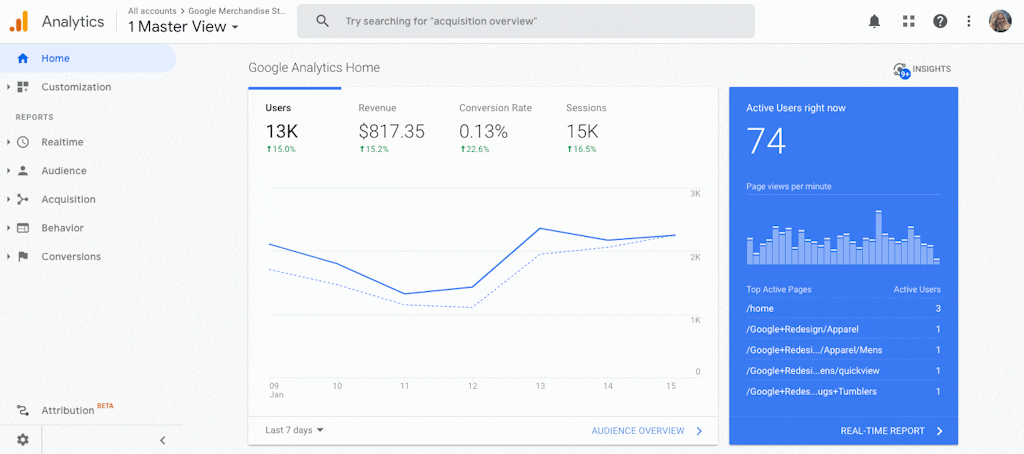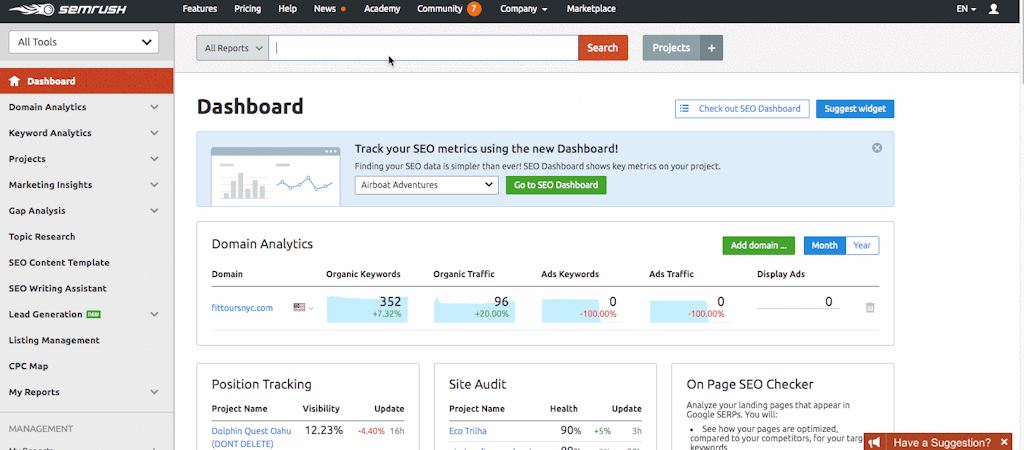- 4 minute read
- Digital Marketing
- SEO
3 Simple Blog Writing Tips to Grow Engagement and Conversions
All Skill Levels
Join hundreds of other operators and REGISTER NOW for Spark 2024 New Orleans October 13-15th!

With so many SEO goals and best practices to follow, like using Google Analytics, avoiding duplicate content, and doing keyword research, it’s normal to wonder if all your hard work is paying off. That’s why it’s essential to the success of your website to track your SEO performance over time. By setting goals and measuring key performance indicators (KPIs), you can see what’s working well and what changes you need to make to your overall SEO strategy to see your keyword rankings and organic traffic improve. This guide will cover how to set measurable goals and what metrics to track to ensure you’re reaching those goals.
 Before you can begin measuring the success of your website, you need to set some goals for the future of your website. It’s a good idea to start with the end in mind. How do you want your website to perform after all of your optimizations? What specific improvements are you hoping to achieve? What does SEO success mean to you?
Before you can begin measuring the success of your website, you need to set some goals for the future of your website. It’s a good idea to start with the end in mind. How do you want your website to perform after all of your optimizations? What specific improvements are you hoping to achieve? What does SEO success mean to you?
Some common goals for FareHarbor clients are improving keyword rankings, such as moving onto the first page of the SERP for a certain query. Others include improving organic traffic, increasing revenue and improving lead and traffic quality. When you think about traffic in terms of measuring SEO success, keep in mind that we usually track organic traffic rather than paid traffic, since paid traffic is not as reliant on SEO. Another example of a goal you might have for your website is to increase online bookings, or to draw more visitors to your business blog.

Pro-tip: Set yourself up for success! Everyone wants to be #1 on Google but it is important to make sure to set goals that are achievable, measurable, and meaningful to your business.
No matter which goals you’ve chosen to focus on, there are many engagement metrics to help you track your efforts.
Google Analytics should be your go-to tool for gaining an understanding of who viewed your website and how they interacted with it. For a full overview of how to use GA, check out this guide.
Once you’ve brushed up on GA, we recommend taking a look at these three reports about every 30 days: Channel Report, Conversion Report, and Landing Page Report.
To access the following reports, first log in to your Google Analytics account.
The Channel Report shows a breakdown of how all of your channels are performing and which sources are driving the most and the best traffic to your website. For example, you’ll see channels such as Direct (people entering the URL of your website into their browser), Referral (people who click on a link to your website from another website), and others. Keep in mind that SEO efforts only really affect organic traffic, not paid traffic.

The Conversion Report shows you a breakdown of your conversion metrics, including conversion rate, transactions, and more, over a period of time. You’ll be able to see the number of users, checkout and shopping cart behavior, total revenue, and other useful metrics to track if your conversion rate has improved over time.

Similar to the Channel Report, the Landing Page Report shows you how each of your landing pages is performing. You can see which pages are the most popular, the average length of time a visitor stays on your website, the percentage of new visitors, and other helpful data.
 Keyword rankings refer to your web page’s position on the SERP for a particular keyword or search query. Understanding your keyword ranking is essential for increasing traffic, driving conversions, and targeting the correct audience.
Keyword rankings refer to your web page’s position on the SERP for a particular keyword or search query. Understanding your keyword ranking is essential for increasing traffic, driving conversions, and targeting the correct audience.
When evaluating your Google Analytics metrics, it’s important to also consider keyword rankings for the full picture of your SEO strategy. Your keyword ranking could be behind some of the poor metrics you’re seeing in Google Analytics, since search queries are how most people find your website in the first place. If you’re not seeing the organic traffic you want, you might need to consider doing additional keyword research. Use the following tools to view your current keyword rankings.
Google Search Console (GSC) provides insight into how search engines see and index your site and helps you identify any issues that could be costing you valuable traffic. You can also use it to view your website’s current rankings.
To view keyword rankings, go to Performance, select the Queries tab, and scroll through the list to see every keyword your website ranks for. To view keyword rankings for an individual page, click the Pages tab and select which page you’d like to view, then click the Queries tab again to see the keywords for that page.

SEMrush is a leading SEO tool, offering both a free version and a paid version. You can use it to find the keywords you’re already ranking for as well what your competitors are ranking for to help you improve your SEO.
To perform keyword research with SEMrush:
 Pro-tip: Rather than going straight for the highest volume keywords (which will also have the highest competition), start with the keywords where you already rank in the second or third page of the SERP and optimize those pages to rank higher. Also, remember that it takes time to rank, especially for new websites or pages, so be patient and don’t get discouraged.
Pro-tip: Rather than going straight for the highest volume keywords (which will also have the highest competition), start with the keywords where you already rank in the second or third page of the SERP and optimize those pages to rank higher. Also, remember that it takes time to rank, especially for new websites or pages, so be patient and don’t get discouraged.

Now ask yourself the following questions.
Keep in mind that a lower total number of keyword rankings isn’t always a bad sign, as sometimes the keywords that you were ranking for before were less qualified, and not particularly relevant to your business. For example, let’s say you run whale watching tours in Mexico, and last month you ranked for “baby whales,” but you do not rank for this keyword currently. Technically you’ve “lost” a keyword ranking, but you may or may not care about this particular keyword for your business. Many people searching for this term are likely just looking for general information about baby whales, as opposed to tours that specifically show baby whales. An example of a keyword you would care about (a qualified keyword) is “whale tours Mexico” because people searching it most likely have the intent to book a tour.
 Next Steps
Next StepsNow that you have an idea of how to measure SEO success, continue to track the metrics in this guide every 30 days or so. Make a note whenever you make any major changes to your website such as adding new tours so that you can see any resulting changes to organic traffic. For more information about important SEO best practices to follow, view our SEO guides.